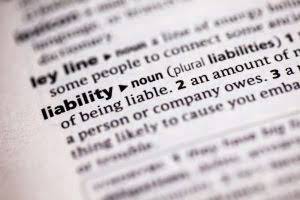
Another disadvantage is that it doesn’t show the complete picture of an organization’s financial health. Unlike traditional methods of accounting, which consolidate all financial data, fund accounting separates finances based on the specific purpose or source of funds. What is fund accounting, and what does it have to do with nonprofits, charitable, or religious organizations? It’s a standard almost all nonprofit organizations and churches have to adhere to in one way or another, and it differs from basic accounting. Instead of preparing profit and loss accounts, organizations that use fund accounting, typically nonprofits, have payment and receipt accounts, revenue and expenses accounts, and balance sheets. The payment and receipt accounts are used to record the cash receipts and payments extracted from the organization.
- They need to keep a tight grip on their finances to determine how funds are leveraged for a variety of purposes and different projects.
- The money will go into restricted or temporarily restricted funds if the donors have specific requests.
- Government entities rely on the fund accounting process for control and accountability over their resources.
- If the organization can use it in any way, the resources will end up in the unrestricted bucket.
- Fund accounting is generally used by any organization that focuses on accountability rather than profitability.
For instance, a provider might give a nonprofit organization funds for a new building project, research on a particular issue, or a scholarship for underprivileged students. Suppose you manage a nonprofit that helps stray animals, and your operations are pretty straightforward at the moment. You receive money from donations, and you spend a little to keep the lights on. These 501(C)(3) organizations fund accounting meaning are the primary type of organization discussed in matters of fund accounting. Whether she was helping arts nonprofits with their messaging and content, planning a fundraising gala, writing an NEA grant proposal, or running a membership program with over 400 members, she learned how to navigate – and appreciate! Now, she loves sharing those hard-earned lessons with the Donorbox community.
Nonprofits
In a business, you want to know how much was spent, how much was earned, and how much was left over. With a nonprofit, you want to know these things, but you also want to make sure your income and expenses are allocated for the proper purposes. Fund accounting for churches allows them to track the finances in different categories and ensure proper use of their resources. Churches may also deal with fund restrictions and grants requiring even greater accountability.
Therefore, they can’t be used as easily as other funds to help the organization operate. When organizations receive contributions, they record them in the chart of accounts depending on where they come from and how they are expected to be used. For example, in a church fund accounting chart of accounts, each fund has a numbered classification for easier categorization and decision-making. Donations may be recorded under the 2000s, with individual contributions under 2100s, donations in kind under 2200s, and so on.
What are Financial Securities? – Types, Advantages…
Customization of fund accounting and fund administration software as well as a clear designation of roles, responsibilities and expectations for both fund accounting and management sets up the fund to operate smoothly. Nonprofit organizations can have different types of funds beyond restricted or unrestricted. Additional categories can include temporarily restricted or board-designated. Here’s a look into each type to better understand the characteristics and applications. If you’re currently using QuickBooks® or another for-profit accounting software, we invite you to try Aplos for free and see the difference.

Fund accounting will make all necessary investigations and inquiries and seek decisions from management to reach a clean closure of the fund. In the next lesson, we will look at money that goes into and out of your organization, and how to set up your chart of accounts. You might be more interested in how that money is used because you gave it out of the goodness of your heart.

